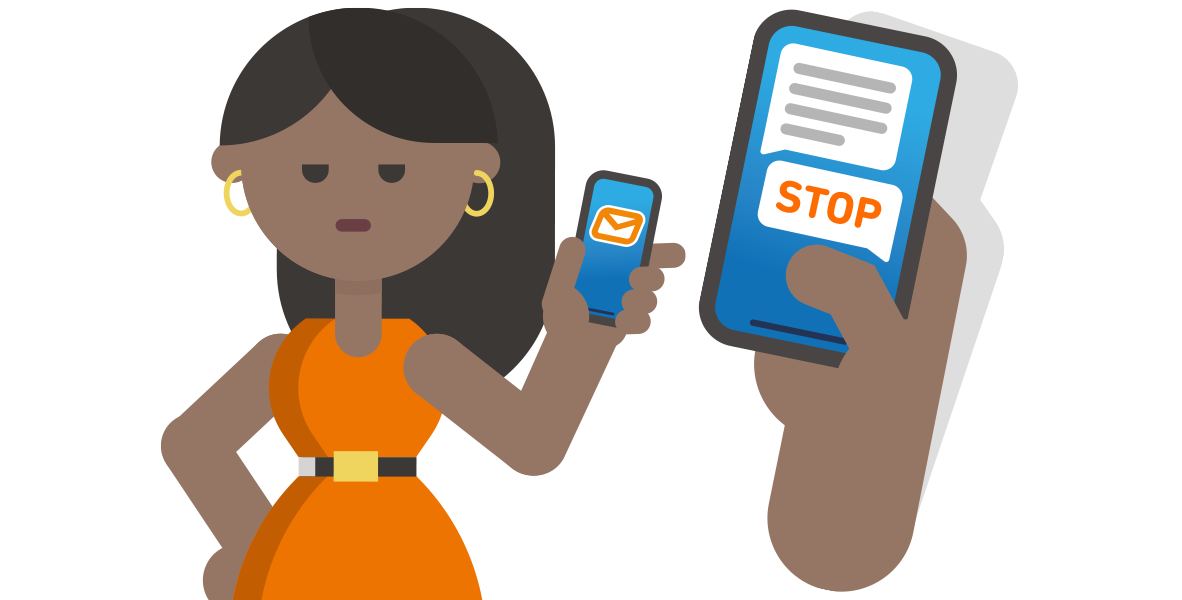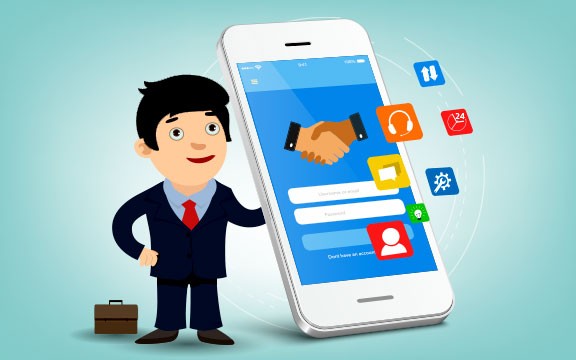Text messaging has been around for decades, but it remains one of the best ways to stay in touch with clients. Organizations can send customers transactional updates, promotional notifications, and other relevant content through messaging technology.
If you’re considering adding SMS messaging to your company’s communication channels, you’ll want to understand how it works and what you can use it for. Here is an overview of text messaging for business owners and marketing managers.
Types of Messaging Technology
You’ll likely hear many terms that refer to different types of text messaging, including SMS, MMS, RCS, and OTT. While they all refer to messages sent over a cellular connection, each serves a particular purpose and has specific characteristics.
SMS Messaging
Short message service (SMS) is the granddaddy of text messaging. Businesses use it the most in their text messaging communications since nearly every phone and cellular carrier is capable of sending and receiving SMS texts.
All SMS texts are limited to 160 characters and encoded using GSM 7-bit technology. GSM-7 characters include the English alphabet, numbers, special symbols, and punctuation marks. Texts that exceed the 160-character limit are broken into multiple SMS text messages.
When someone sends an SMS message, it’s delivered using store-and-forward technology. Store-and-forward delivery requires the initial message to be saved to the sender’s device. Once it is saved, the sender’s device communicates with nearby cellular networks to transmit the text to the recipient’s phone.
Businesses can request SMS delivery confirmation from the service they use to send messages. Delivery confirmations help senders know whether their messages reach their destination or not. Messages may fail to deliver if the recipient provides an incorrect phone number or there is a problem with the cellular carrier.
Recipients typically incur charges for the SMS messages they receive. Some cellular providers provide unlimited free SMS texts, while others charge per message or for the data incurred from receiving an SMS.
Developers can integrate an SMS API (application programming interface) into various software applications or systems. An SMS API allows users to send and receive bulk SMS texts while automating some messaging processes.
Multimedia Messaging Service (MMS)
MMS messages work similarly to SMS texts, but they have additional functionality that businesses and individuals find useful.
Through MMS messaging technology, senders and receivers can include multimedia content, like images, videos, and audio files. MMS messages don’t have 160-character limits, so it’s possible to send much lengthier content and not split it into multiple texts.
Over-the-Top Messaging (OTT)
An OTT messaging app is a third-party solution that provides instantaneous texts without using traditional SMS or MMS services. Senders and recipients can share pictures, videos, and audio files through OTT apps. They can also participate in one-on-one and group audio and video calls.
Most OTT messaging solutions provide end-to-end encryption. Since they are transferred using data only, they are cheaper than traditional SMS and MMS texts.
Rich Communication Services (RCS)
RCS is a newer form of text messaging that includes additional features like read receipts, high-resolution file sharing, typing indicators, and other interactive elements.
Because RCS is still relatively new, not all devices support it. The telecommunication provider and the smartphone manufacturer must give the necessary support to send or receive RCS messages.
Application-to-Person (A2P) Messaging
In an A2P ecosystem, a business or another service provider sends SMS or MMS texts directly to individuals. The company can send individual texts like transaction notifications, appointment reminders, or bulk messages to a group of recipients simultaneously.
Instead of originating from a cell phone, an A2P message initiates from an application or software program.
Some of the most common types of A2P messages include transactional messages, promotional messages, and alerts or notifications.
A specific action usually triggers a transactional message. For instance, if a consumer purchases an item online and provides their phone number for shipping updates, they’ll receive A2P messages from the time the transaction is initiated until they receive the product.
Transactional messages are also commonly used for order confirmations, appointment reminders, and account notifications.
Promotional messages include advertisements or other content used to advertise a business. Companies that send promotional messages may use a unique discount code or offer to encourage a purchase. They can also notify recipients of newly available products or services.
An alert or notification let recipients know of important events, service disruptions, emergencies, or other information they need to be aware of. Alerts can originate from an organization, company, government service provider, or cellular provider.
Organizations can deliver A2P messages through several different channels. The most common medium is traditional SMS technology, which is advantageous due to its widespread adoption, reliability, and broad reach. A2P messaging is also helpful for sending pre-recorded voice calls that provide information to recipients.
This type of messaging can also enable push notifications. Push notifications typically appear as banners on a user’s device from an app installed on their phone. An A2P message may include text, images, or other content.
A2P messaging is the go-to solution for most companies since it allows for bulk messaging. It’s also very quick. An organization can prepare a message in less than a few minutes and send it to thousands of subscribers with near-immediate delivery.
Other benefits of A2P messaging include automation and personalization. Organizations can create specific workflows that trigger the automatic delivery of A2P messages, reducing reliance on manual intervention.
Additionally, companies can add details to their communications, like the customer’s name or recent transaction details. A personalized message usually increases engagement with the communication and can improve the client experience.
Regulation of Messaging Technologies

Before adopting SMS texts or A2P messaging into your communication channels, you’ll need to understand the current regulatory environment. Various laws protect consumers from unwanted SMS texts. If your organization violates the rules, it may face fines or penalties.
A few laws to be aware of include the following:
Telephone Consumer Protection Act (TCPA)
The TCPA is a U.S. federal law that governs telemarketing and text messaging. It requires all organizations that send text messages to receive a client’s consent before sending them automated marketing messages. The TCPA also requires organizations to provide subscribers with an easy opt-out procedure if they no longer want to receive texts.
General Data Protection Regulation (GDPR)
The GDPR applies to organizations that use SMS to communicate with residents of the European Union. Its primary function is restricting organizations from using individuals’ personal information without consent. Companies must have the recipient’s informed approval before sending an SMS text to an EU resident.
Individuals retain the right to request access or erasure of any data the company maintains.
CAN-SPAM Act
The CAN-SPAM Act is a U.S. law providing consumer protection for email and text messages. Under the CAN-SPAM Act, organizations must provide their contact information and straightforward ways to opt out of future messages.
Organizations must also identify when a communication contains an advertisement.
Carrier Guidelines and Regulations
Most mobile carriers have their own set of guidelines that companies must adhere to when they send consumers text messages. Typically, a carrier’s guidelines outline the type of content the organization can send and any existing message volume limitations.
If a sender violates the carrier’s agreement, the telecommunications company may restrict them from sending future messages through that service.
Industry-Specific Regulations
Occasionally, organizations will also need to consider industry-specific regulations that could impact their text messaging capabilities.
For instance, healthcare organizations are subject to HIPAA regulations. HIPAA provides extensive privacy restrictions and requires organizations to implement specific security measures to protect a consumer’s sensitive information. If a company’s text messages violate HIPAA, it may be subject to fines or penalties.
Get Individual Consent Before Sending Text Messages
The best way to avoid legal complications that arise from SMS messages is to obtain full consent from a consumer before sending them texts.
Provide opt-in mechanisms that make it clear to subscribers that they’ll begin receiving marketing communications once they provide their phone numbers. If a consumer decides they no longer want to receive texts from your organization, they should have a simple way to opt out.
Use Cases for SMS Text Messages
Once you begin your SMS text campaigns, you’ll find various ways they can be helpful to both consumers and your company. Here are a few examples of using text messages for your organization.
Customer Support Text Messages
Text messages support two-way communication between your organization and clients. Customers can initiate texts with your organization without needing to call you directly. In turn, your customer service agency can quickly respond to their calls.
Here’s an example of a company that uses text messages for customer service inquiries:
Client: “Hello! I ordered an XYZ product a few days ago. Can you provide a status update?”
Organization: “Thank you for contacting us. Please let me know the order number, and I’ll check on your product.”
Client: “It’s order number ANDG9423. I placed the order on September 14.”
Organization: “I’ve checked your order, and it’s currently in transit. It should arrive on [date]. You can use this link to check on its progress. Let us know if you have any additional questions!”
Marketing Text Messages
Marketing text messages are typically promotional and alert consumers to upcoming sales or discounts they might benefit from. For example, consider the below texts:
“Hi, [customer name]! XYZ Store is offering a limited-time 50% off discount on all of our in-store products. To take advantage of this offer, visit your closest XYZ Store and use the code ‘FREE50.’ The sale ends Sunday evening, so make sure to visit soon!”
“DEN Store is pleased to announce our annual summer sale this Saturday from 9 a.m. to 6 p.m.! Join us for exclusive savings on TVs, home appliances, and furniture you won’t find anywhere else!”
Text Messaging Increases Customer Engagement and Brand Awareness
A comprehensive SMS and email marketing strategy helps brands stay in touch with their clients, improving customer engagement and brand awareness. You can strengthen relationships with your audience through both communication channels, and this can help boost your sales.
If you’re looking for a comprehensive email and SMS messaging platform, check out Contact Consumers. Our solution is appropriate for organizations in various industry sectors, including e-commerce, restaurants, and nonprofits. To learn more, contact us today.




